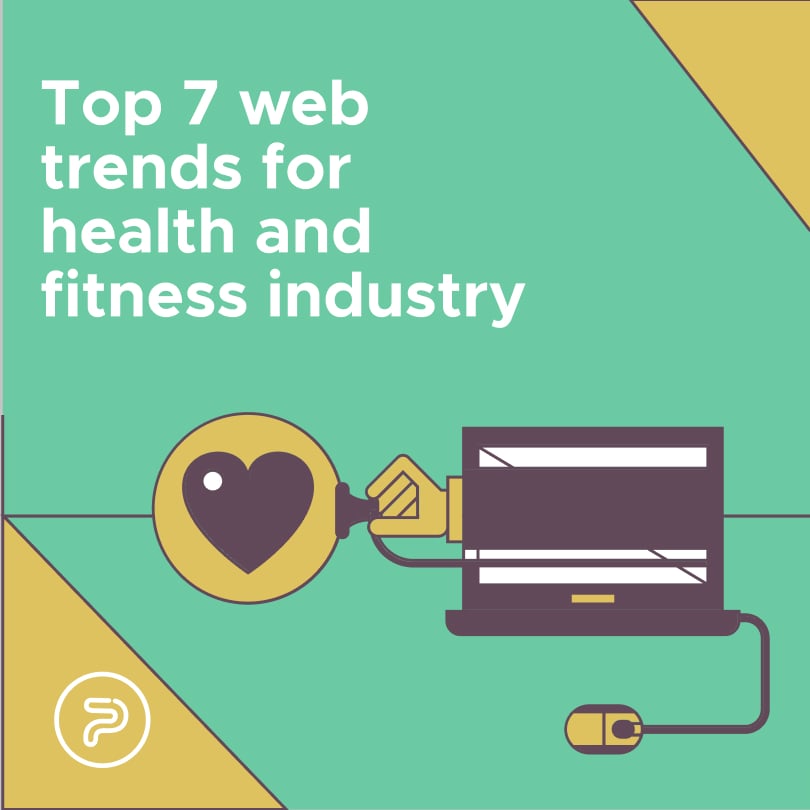If you've been in the healthcare industry, then you're probably familiar with the fact that the digital transformation has been reshaping the entire business making it sometimes overwhelming and almost unpredictable.
More often than not, the hardest part is in deciding which is the latest technology that’s worth investing in, not just in a monetary sense but from the aspect of manpower and team education as well.
Most entrepreneurs from other industries will often tell people in the healthcare business that in order to make the best of what the digital era has to offer, the need to shift to a more flexible and risk-taking mindset.
And even though, letting go of old and outdated models and business processes might seem scary, the digital transformation both in healthcare and fitness is having a huge impact on both niches, and in a positive way.
Telemedicine, AI-powered services, and blockchain health records are only a few great examples of what the digital era managed to bring to the table. These technologies are completely reshaping the way how healthcare and fitness professionals react with clients/patients and even with their own craft.
Innovation enables to streamline work processes, optimize systems, improve outcomes and reduce costs along with the possibility of human errors at the same time through amazing web and mobile experiences.
Sadly, the biggest problem is that the healthcare industry, in particular, failed to jump on the bandwagon on time and is now lagging behind when it comes to the implementation of these strategies. In recent years, only 7% of the industry’s companies were digitized, while in other industries, this percentage was roughly around 15%.
Taking into account that the global healthcare market is enormous, it’s safe to say that those companies who failed to acknowledge the importance of the latest digital advancements, missed the chance to be the first to offer ground-breaking solutions and services for their patients and customers.
Even now, it’s now too late to join the group of trailblazers, so, to kick the journey, here are 7 key trends that are driving the web technology trends of the healthcare and fitness industries.
On-demand Healthcare
As the healthcare industry is entering a new era of digital innovation, on-demand services are gaining popularity, with mobile as the focal point of the change.
For starters, mobile usage has become a main driving force in the digital realm, and mobile phones have become the most popular web browsing devices back in 2018 and only gained more popularity since then.
With that in mind, healthcare professionals should be aware of the fact that mobile users will also research doctors, medical facilities, and care options/services through their mobile phones. Dedicated healthcare apps, online marketplaces that help connect patients with doctors, doctors with hospitals created a somewhat a gig-economy-like picture, where hospitals will recruit doctors for short-term work to meet the demands of patients’ schedules, circumstances, needs, and so on.
The Crucial Role of Big Data
Aggregating and analyzing information in such an important industry as healthcare can have several positive implications and even industry-changing consequences.
- Lowering medication error rates: Analyzing patient records, dedicated software can flag inconsistencies between drug prescriptions and the patient’s health alerting both them and their doctors that there are potential risks involved in the medication they are taking or about to take.
- Better preventive care: Big data analysis could also help with identifying patterns for injury or illness for some, and enable healthcare professionals to create preventive plans to combat these problems.
- Improved staff allocation: Predictive analysis can help hospitals and medical facilities better estimate future admission rates that can improve the way they allocate their staff, providing better patient care at the same time.
These are just a few simple examples showcasing how proper data organization can help them improve their processes and workflow across the board. With the help of analytics experts, hospitals and clinics can better understand their patients, pinpoint areas of weakness, and can make safe decisions about improving their processes and eradicating weak points.
For the fitness industry, big data can help a great deal with better understanding market dynamics. With fresh data and insight at their fingertips, they can better determine product/service budgets based on existing figures and empirical facts.
Virtual Reality and Treatment
Virtual reality and its myriad of different digital applications services are changing the industry and how doctors and patients alike approach the topic of treatment altogether.
For example, VR technology is proving to be ground-breaking in pain management as it’s a safer and more efficient alternative to prescription drugs. Also, VR technology can help with patients who suffer from anxiety and even post-traumatic stress disorder, and much more.
Furthermore, VR can be used by doctors and fitness experts to hone their skills. For example, it can help surgeons plan complicated surgeries. VR headsets can also serve as a motivator for wearers to exercise.
VR looks tremendously promising and the numbers back that up. The global virtual and augmented reality market in healthcare is expected to reach a staggering $5.1 billion by 2025.
Wearable Medical Devices
Smart wearables have already managed to gain ground in the fitness industry and healthcare companies are seeming to follow suit as such wearable technology can also help doctors in collecting medical data.

On the other hand, the demand has changed as well. For starters, in the past, people will pretty satisfied with having physicals once every year, however, now, people are focusing more on prevention and longevity than ever. From this aspect, wearable tech can help both patients and doctors when it comes to health maintenance and proper prevention.
Devices like heart rate sensors, exercise trackers, sweat meters, and oximeters can all help with preventing serious complications and can also aid in keeping the body perform at optimal levels.
Furthermore, these “gadgets” also help personalize the healthcare experience as they give patients a sense of ownership meanwhile they improve their health. These devices can also help insurance companies with rating a patient’s risk for illness and can also help patients who take preventive measures get lower insurance premiums. Lastly, fitness watches and similar devices can provide gamification opportunities as they can give competitive goals for the user.
Predictive Healthcare
We’ve already touched bases on the role of big data in healthcare and how it can help companies avoid errors and keep admission rates at bay. Another great feature of big data we haven’t mentioned is the fact that can also help predict what diseases and illnesses will become major problems in the near future.
The information collected through various sources can help doctors develop healthy lifestyle recommendations for their patients.
Predictive analysis can help on a larger scale as it can use the most commonly used illness-related keyword searches and pinpoint the outbreak of seasonal flu outbreaks and colds better. On a smaller scale, it can also help medical facilities in determining when to hire temporary staff because of said outbreaks to avoid worker shortage.
The World of AI
Some say that artificial intelligence (AI) is the epitome of medical innovation that can reshape the entire industry and help in countless different areas.
For instance, sci-fi-like android assistants for nurses with tasks like restocking and fetching supplies are already here. Then you also have AI-related tech like chatbots which most of us already know from marketing. These bots can also fill in several shoes, from taking up customer service duties to diagnostic tools, and may even double as therapists.
However, we are only scratching the surface now. Experts agree that the power of AI can be observed the best in medical imaging, precision medicine, genomics, and drug discovery. AI’s sophisticated pattern recognition can help cancer patients have personalized therapies tailored to their lifestyle and genetic makeup instead of a cookie-cutter program.
Pharmaceutical and biotechnology companies are also embracing the capabilities of machine learning to shorten the drug development cycle, as on average, AI can shorten drug discovery timelines by roughly four years and achieve cost savings as high as 60%.
Blockchain and the Future of Health Records
Blockchain has managed to stir up a fair amount of controversy, thanks to the cryptocurrency phenomenon, however, this is only just a segment of the technology and there are even more important aspects of blockchain that can play profound roles in their everyday lives.
For instance, blockchain can help keep patients’ health records safe and accurate.
In a nutshell, blockchain is a computerized database of transactions. This digital ledger is shared across a larger network of computers allowing people to safely exchange information without the need for third-party involvement. In the case of finances, this would mean money transfers without banks.
In healthcare, blockchain technology can help prevent data breaches, improve the accuracy of medical records, and ultimately, keep costs low.
This technology is an easy solution for the problem of fragmented medical records as medical data currently is more or less being recorded in unstructured formats stretching across multiple electronic health record systems and professionals often struggle to log in every piece of info. This can lead to huge errors like misdiagnoses, duplicate records and even deaths.

On the other hand, these records contain more than just one’s medical history. They also contain home addresses, financial info, and workplace info making them an appealing target for hackers.
Blockchain tech can help detect conflicting information and puts records in a digital environment that’s harder to hack.
A New Era has Begun
Through these tech advancements, doctors and fitness experts now have an even better understanding of their own profession, not to mention, patients are also becoming active participants in healthcare and fitness as they are more involved in promoting and maintaining their own well-being.
Additionally, this lets experts monitor their patients in real-time.
For example, completing 14,000 steps a day might not seem as much, however, that info can become valuable when doctors transform that data into actionable knowledge. How many calories did you burn? Would you need to add more steps to lose weight? Even though, these technological advancements are still tools and not the experts deciding which course of treatment to take, they are still valuable tools in helping experts who are making the decision.
Lastly, 5G mobile technology which can run up to 100 times faster than currently used cellular connection methods can allow for faster means of communication, instantaneous streaming, uploading, and downloading. This means, better video conference quality, better, real-time imaging of soft tissue, organs, and bones, and much more greatly decreasing the potential risk of misdiagnosis.
Furthermore, the 5G network will probably cause the biggest boom in the wearable department, as most of these devices that use remote monitoring tech have not yet reached their full potential due to network speed barriers and connectivity issues. With 5G, clinicians will be able to collect medical data instantaneously from large groups, enabling them to make fast and reliable diagnoses.
Finishing Thoughts
As you can see, preventative care is at the focal point of the healthcare industry of tomorrow. With the help of the latest digital innovations, fewer people will develop chronic conditions and less money will be spent on expensive medical bills.
All in all, the transformation is already happening in the healthcare design industry of the future looks even more promising as these technologies evolve and become even more sophisticated and reliable.





